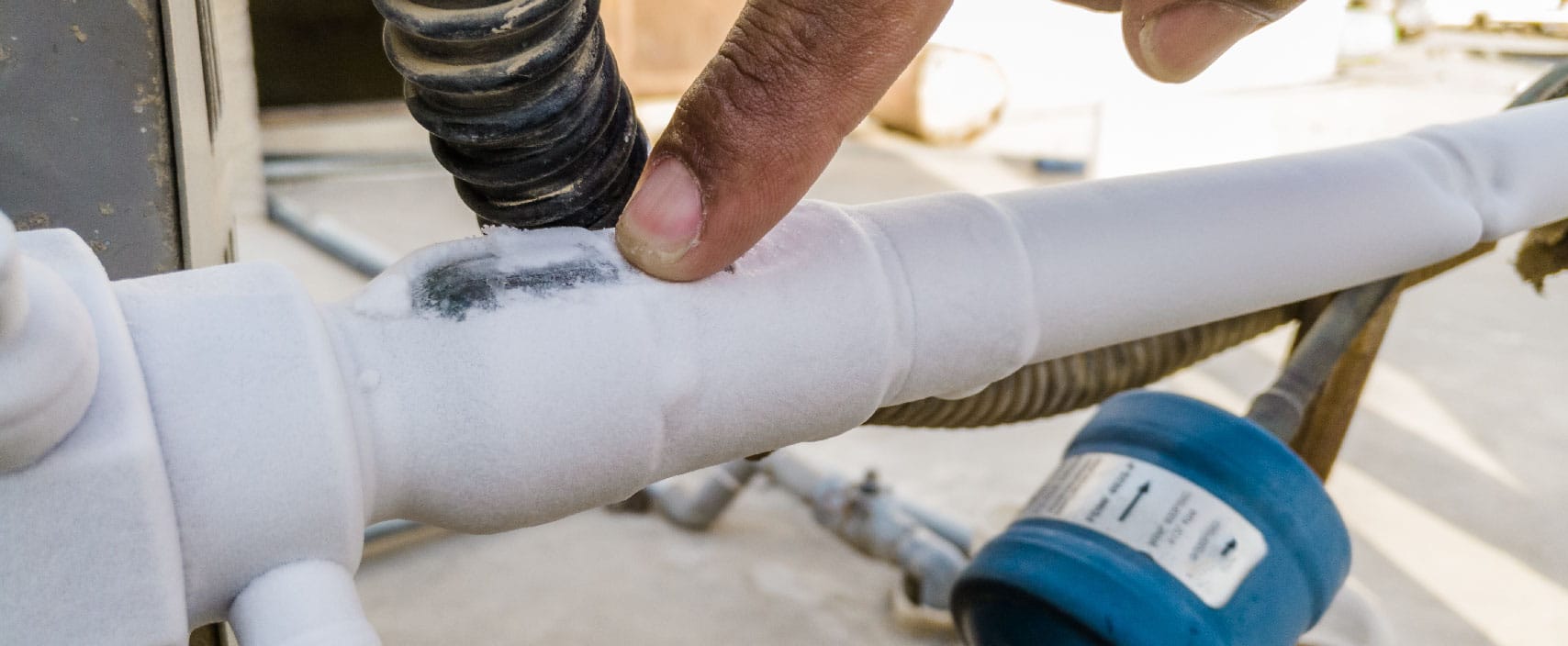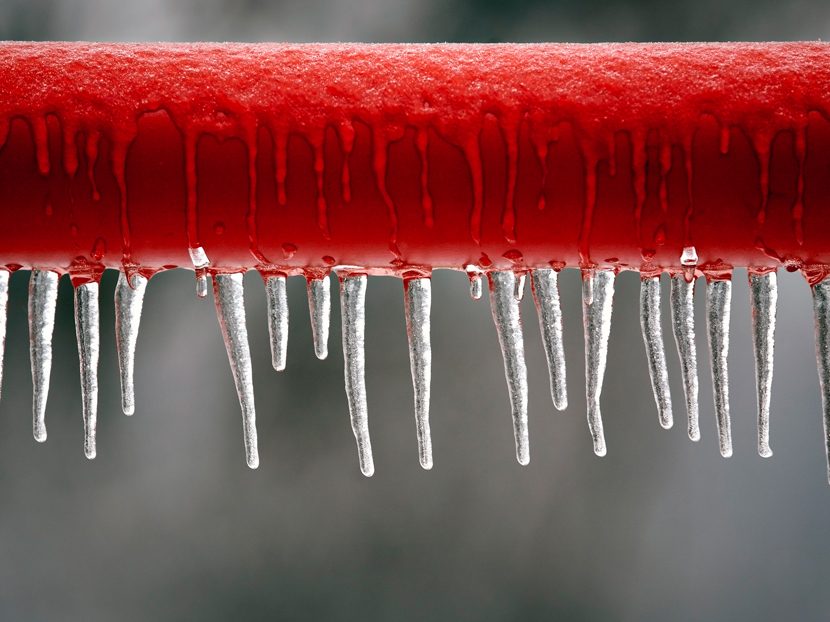Troubleshooting a Frozen AC Pipe - Effective Solutions for Home Cooling Systems
Troubleshooting a Frozen AC Pipe - Effective Solutions for Home Cooling Systems
Blog Article
How do you actually feel in relation to Have a Frozen AC Line? Here’s How to Fix It?

Introduction
Uncovering that your air conditioner pipeline is iced up can be worrying, specifically during hot summer months when you rely on your a/c unit the most. Recognizing what to do in such a circumstance is important to prevent further damages to your cooling system and guarantee your comfort indoors.
Recognizing the Causes
Numerous variables can add to the freezing of an air conditioner pipe. Understanding these causes can help you resolve the problem properly.
Lack of Airflow
One typical cause of an icy AC pipe is inadequate airflow. When the air movement over the evaporator coil is restricted, it can trigger the coil to go down below freezing temperature, leading to ice formation on the pipeline.
Reduced Refrigerant Levels
Insufficient cooling agent levels in your a/c system can additionally result in a frozen pipe. Low refrigerant levels can trigger the stress in the system to go down, resulting in the cold of wetness on the evaporator coil.
Winter Conditions
In cooler environments, freezing temperature levels outside can contribute to the cold of air conditioning pipes. If your air conditioner unit is not appropriately protected or if there are leaks in the ductwork, chilly air can infiltrate the system, causing the pipe to ice up.
Dirty Air Filters
Unclean or stopped up air filters can restrict air movement in your air conditioner system, bring about different problems, consisting of a frozen pipe. It's vital to change or clean your air filterings system frequently to guarantee correct air flow and avoid ice accumulation.
Signs of a Frozen Air Conditioner Pipe
Acknowledging the indicators of a frozen air conditioning pipeline is important for punctual action.
Lowered Airflow
If you notice a considerable decrease in air flow from your vents, it can indicate a frozen pipe.
Ice Buildup on the Pipe
Noticeable ice build-up on the refrigerant line or the evaporator coil is a clear indicator of an icy air conditioner pipe.
Unusual Sounds from the Unit
Uncommon audios, such as hissing or gurgling, coming from your AC device can signify that there's ice existing on the pipe.
Immediate Actions to Take
When faced with a frozen AC pipeline, it's vital to act swiftly to avoid further damage to your air conditioning system.
Shutting off the air conditioning
The first step is to switch off your air conditioning unit to stop the system from running and worsening the problem.
Checking for Blockages
Examine the location around the interior device for any type of obstructions that might be blocking air movement, such as furnishings or drapes.
Defrosting the Pipe
You can use mild methods like positioning towels taken in warm water around the frozen pipeline to aid thaw it gradually.
Safety nets
Taking preventive measures can assist stay clear of future events of an icy air conditioning pipe.
Regular Maintenance Checks
Arrange routine maintenance checks with a professional HVAC professional to ensure that your a/c system is running efficiently.
Changing Air Filters
Regularly replace or clean your air filters to avoid air movement restrictions and maintain ideal efficiency.
Shielding Exposed Pipes
If your AC pipes are exposed to cold temperatures, think about protecting them to avoid freezing during winter season.
Seeking Professional Help
If DIY methods fail to resolve the concern or if you're unclear concerning just how to proceed, it's best to seek support from a qualified HVAC service technician.
When DIY Methods Fail
If your attempts to thaw the pipe or address various other issues are not successful, it's time to call an expert.
Significance of Hiring a Professional HVAC Technician
A certified HVAC professional has the know-how and tools essential to identify and repair issues with your a/c system safely and successfully.
Conclusion
Taking care of an icy AC pipe can be a frustrating experience, however recognizing exactly how to react can help reduce damages and recover comfort to your home. By comprehending the reasons, identifying the signs, and taking prompt action, you can effectively deal with the problem and stop future events.
Frozen AC Line: Why It Happens & What To Do About It
A frozen AC line can be a rather peculiar sight in a place like Phoenix, Arizona where nothing ever freezes. In this post, we’ll discuss what makes an air conditioner line frozen – and what you can do about it.
Dirty Air Filters
Did you know that you should be cleaning or replacing your air filters on a monthly basis? Failing to do this can result in airflow issues that, in turn, cause your evaporator coils and lines to freeze over. You’ll notice a buildup of ice on both components, although the buildup on your pipes will, of course, be more evident unless you open your air condition up to reveal the coils.
What To Do About It
Give your air filter a good cleaning if it’s reusable. If not, replace the filter outright. Next, switch your air conditioner’s fan setting on and leave it there for 2-3 hours. This will draw warm air in, helping to thaw your evaporator coil. You can also check out this article for some tips on cleaning the coils themselves if you’d like to speed the process up. Before you switch the unit back to its normal state, make sure the supply vents are completely unobstructed and free of dust or other debris.
If you keep having this issue even after replacing your filters regularly, contact a local HVAC repair company and have them inspect your evaporator coil, ductwork, and any other components that may be at fault. If you live in the Phoenix, Arizona area, give American Home Water and Air a call.
Low Refrigerant Levels/Leakage
What To Do About It
Contrary to what air conditioner “recharge” companies often tell their clients about refrigerant, it should never need to be simply refilled. You see, refrigerant runs in what experts refer to as a “closed loop.” Refrigerant really shouldn’t be leaving that loop. If it is, you’ve got a leak.
Paying someone to come and pump more refrigerant into your system (aka “recharge” it) isn’t the solution. Doing that will simply kick the can down the road. Besides, refrigerant leaks can be harmful to the environment and people in your home.
Rather, you need to take care of the leak with the help of a technician. Check out this article for some more information about dealing with air conditioners that are leaking refrigerant. Before you contact a technician, switch your thermostat to the off position. Then, switch the fan setting on and let it run for 2-3 hours so the unit can thaw.
Improper Temperature Setting
Improper temperature settings can also cause a drop in your air conditioner’s pressure. What many people don’t realize is that air conditioners are actually designed to run when temperatures have fallen above roughly 60 degrees Fahrenheit. If you run the unit when it’s cold outside, you’ll run into many issues, including frozen components.

I ran across that post about How can I fix an air conditioner’s frozen pipe? while doing a lookup on the search engines. So long as you liked our page please make sure you remember to pass it around. Thank-you for taking the time to read it.
Click Here Report this page